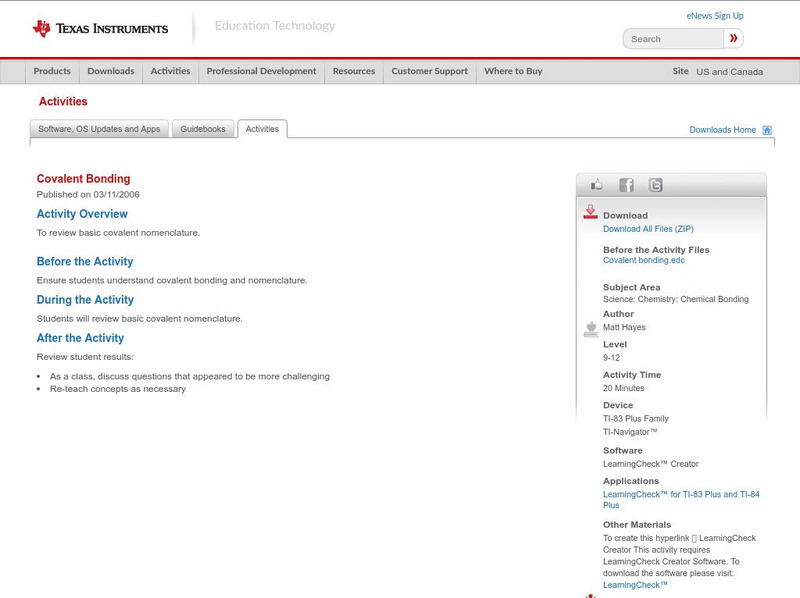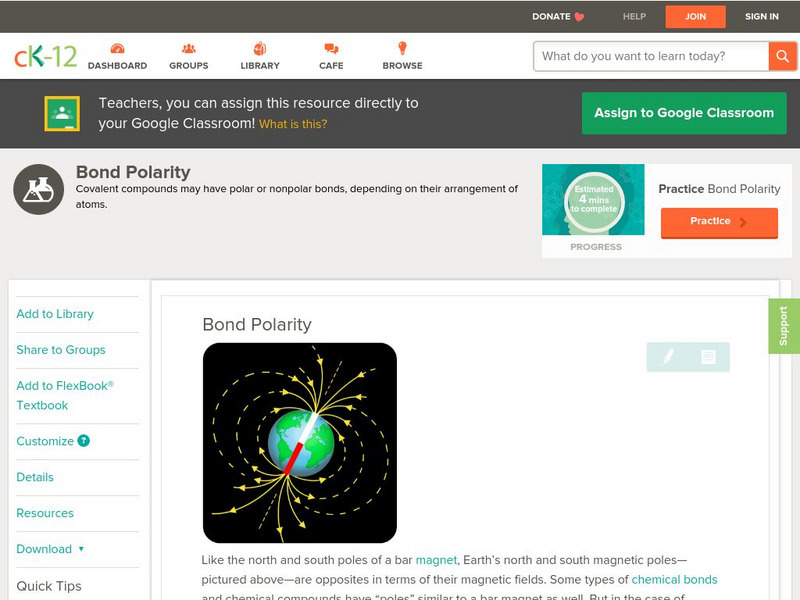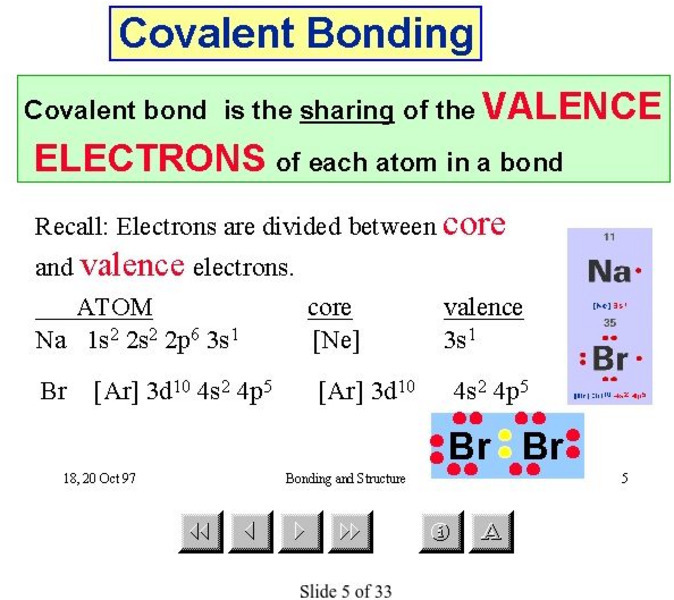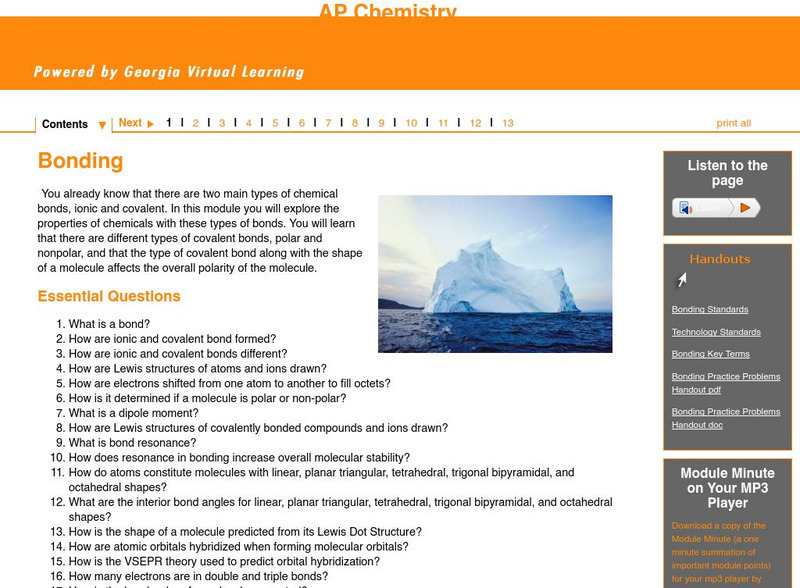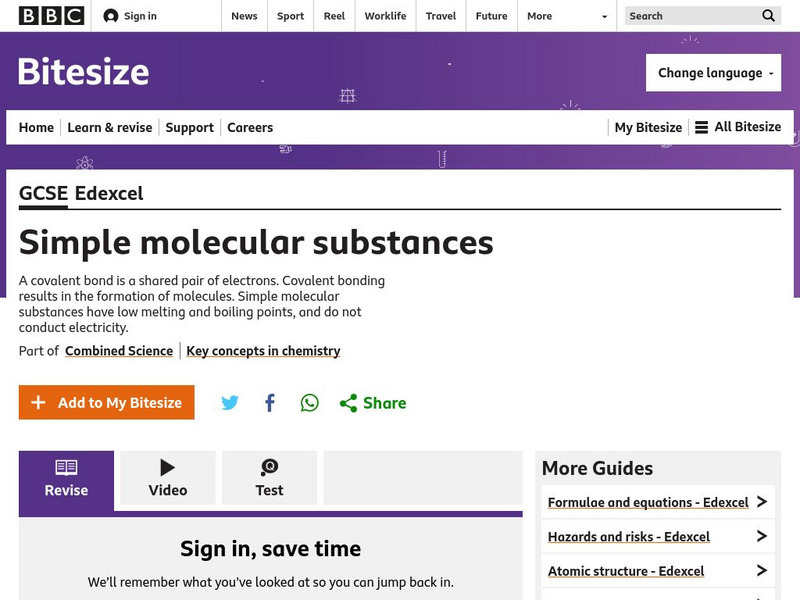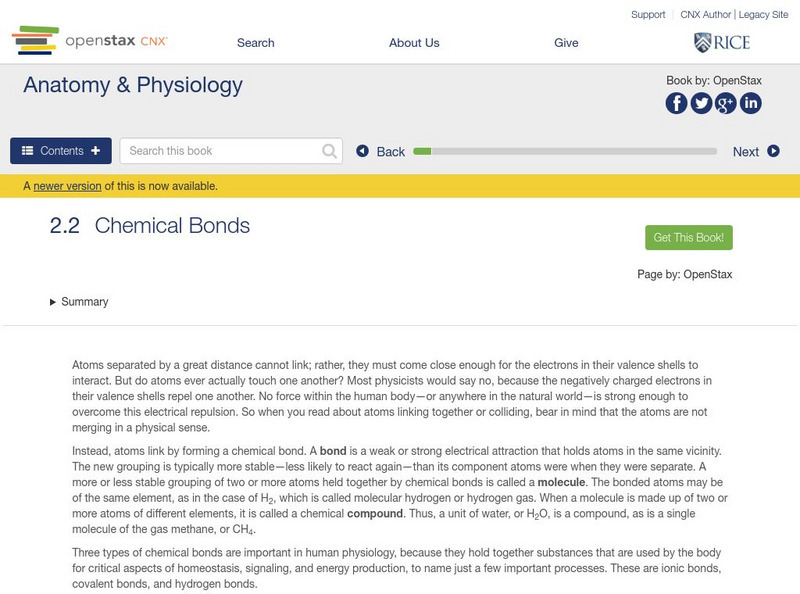Concord Consortium
Concord Consortium: Stem Resources: Chemical Bonds
By working through this web-based activity, students differentiate between ionic, non-polar covalent, and polar covalent bonds. Specifically, distinctions are made between bonding types based on orbital shapes and electronegativity...
Michael Blaber, PhD
Florida State University: Basic Concepts of Covalent Bonding: Covalent Bonding
Good introduction and graphics make this a solid page for understanding the orbital role in bonding and molecular geometry. The author is a professor at Florida State University.
Texas Education Agency
Texas Gateway: Covalent Bonding: Electron Dot Diagrams
Given descriptions, diagrams, scenarios, or chemical symbols, students will model covalent bonds using electron dot formula (Lewis structures).
American Chemical Society
Middle School Chemistry: Energy Levels, Electrons, and Covalent Bonding
Discover how covalent molecular bonding affects the energy levels of electrons.
Texas Instruments
Texas Instruments: Covalent Bonding
This activity helps students review basic covalent nomenclature.
Georgia Department of Education
Ga Virtual Learning: Physical Science: Bonding and Chemical Reactions
Through informational text, interactive puzzles, and review questions, students differentiate ionic and covalent bonds and identify the properties of each. They also use oxidation numbers to predict formulas of ionic compounds, name...
CK-12 Foundation
Ck 12: Physical Science: Bond Polarity
[Free Registration/Login may be required to access all resource tools.] Polarity and covalent bonds.
Other
Personal Site: Covalent Bonding Single Bonds
This site is a personal site that gives "a simple view of covalent bonding" including explanations, diagrams, and examples.
University of Florida
University of Florida: General Chemistry I: Chemical Bonding
Notes on covalent bonding, bond length, bond energies, Lewis dot structures, and percent ionic character. Colorful graphics.
McMaster University
Mc Master University: Covalent Bonding
Slides 5 through 8 in this presentation from the McMaster University explain covalent bonding.
Georgia Department of Education
Ga Virtual Learning: Ap Chemistry: Bonding
In this module students explore the properties of chemicals with covalent and ionic bonds. Students learn that there are different types of covalent bonds, polar and nonpolar, and that the type of covalent bond along with the shape of a...
BBC
Bbc: Gcse Bitesize: Covalent Bonds
A covalent bond is formed between non metal atoms, which combine together by sharing electrons. Covalent compounds have no free electrons and no ions so they don't conduct electricity.
CK-12 Foundation
Ck 12: Lewis Electron Dot Structures
[Free Registration/Login may be required to access all resource tools.] The following online tutorial describes how a covalent bond forms, including the energy change involved in the process.Students will be asked to use the octet rule...
PBS
Pbs Learning Media: Chemical Bonds
This interactive activity developed for Teachers' Domain demonstrates how attractive forces between atoms create chemical bonds, resulting in the formation of molecules and compounds.
Simon Fraser University
Chem1 Virtual Textbook: Chemical Bonds: Covalent or Ionic or What?
Use this resource to understand polar covalence in ion-derived solids.
Other
All About Covalent Compounds!
Visit this site to find out what covalent compounds are, how covalent bonding is different from ionic bonding, how the properties of covalent compounds differ from ionic compounds, and how to name covalent compounds. There is also a link...
OpenStax
Open Stax: Chemical Bonds
Learn here about chemical bonds, a weak or strong electrical attraction that holds atoms in the same vicinity.
American Chemical Society
Middle School Chemistry: Energy Levels, Electrons, Ionic Bonding
Students discover that ionic bonding occurs when electrons are transferred from one atom to the other and not shared as in covalent bonding.
Chem Tutor
Chem Tutor: Binary Covalent Compounds
An explanation of bonding in binary covalent compounds. Rules for naming binary covalent compounds using common names and system names are also provided.
Michael Blaber, PhD
Fsu: Basic Concepts of Chemical Bonding: Polarity and Electronegativity
Florida State University provides an explanation of electronegativity of elements and its affect on bond type.
Chem Tutor
Chem Tutor: Bonds in General
A summary of bonding terms and the importance of electrons in bonding.
CK-12 Foundation
Ck 12: Physical Science: Carbon Bonding
[Free Registration/Login may be required to access all resource tools.] The abundance of carbon and how it forms bonds.
Utah Education Network
Uen: Conductivity and Bonding
Students will measure the conductivity of several compounds and solutions in order to predict the bond types (ionic or covalent) in the substances tested.
Ohio State University
Ohio State University: Electronegativity & Bond Polarity
Excellent graphics help this page explain the relationship between electronegativity and bond polarity.
Other popular searches
- Ionic and Covalent Bonding
- Covalent Bonding Lab
- Covalent Bonding Activity
- Coordinate Covalent Bonding
- Ionic Covalent Bonding
- Covalent Bonding Bhopal
- Covalent Bonding Water
- Polar Covalent Bonding
- Ionic vs. Covalent Bonding
- Covalent Bonding Worksheet
- Ionic vs Covalent Bonding






